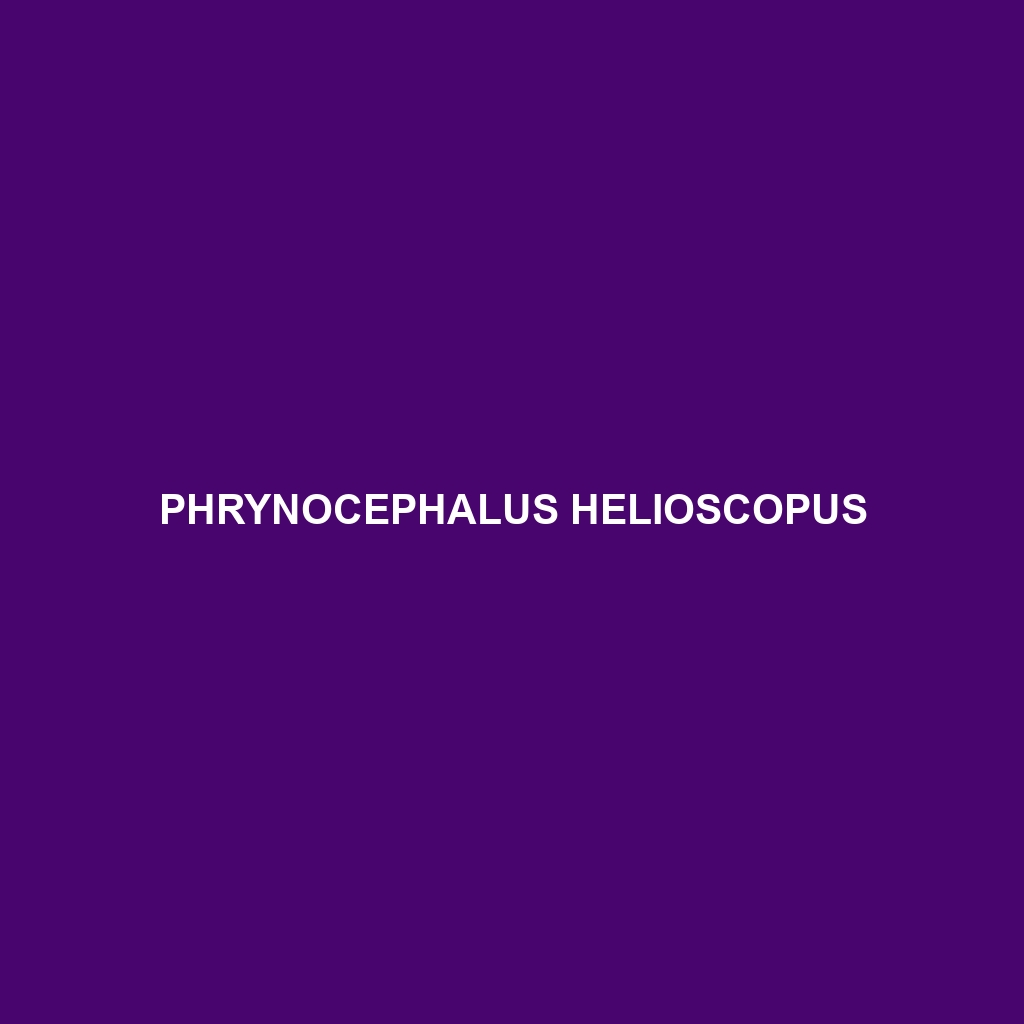Common Name
Phrynocephalus helioscopus
Scientific Name
Phrynocephalus helioscopus
Habitat
Phrynocephalus helioscopus, commonly known as the sun-scaled agama, primarily inhabits the arid and semi-arid regions of Central Asia, predominantly found in countries such as Mongolia, China, and Kazakhstan. The species thrives in environments characterized by rocky outcrops, sparse vegetation, and sandy soils, frequently utilizing the sun’s rays to regulate its body temperature. This lizard favors habitats that experience extreme temperature fluctuations, from hot summers to cold winters, allowing it to adapt well to temperate and desert climates. Typical habitats include dry grasslands, bare slopes, and even disturbed areas, providing ample opportunities for basking and hunting.
Physical Characteristics
The physical attributes of Phrynocephalus helioscopus contribute to its distinctiveness. Adult individuals typically measure between 10 to 20 centimeters (4 to 8 inches) in total length. They possess a flattened, elongated body adapted for life in arid environments, which aids in thermoregulation and camouflage among rocky substrates. The scales feature a unique sun-scaled pattern, often displaying hues of brown and yellow, allowing them to blend seamlessly into their surroundings. Males are usually larger than females and exhibit more vibrant coloration, particularly during the breeding season, whereby they may show off their brightly colored throats to attract mates.
Behavior
Phrynocephalus helioscopus exhibits diurnal behavior, predominantly active during the day. Basking in the sun is a common activity, allowing these lizards to absorb warmth and maintain their metabolic functions. Mating rituals occur in the spring, involving elaborate displays of color changes and physical posturing to attract receptive females. Territorial behaviors are noted, particularly among males, who will defend their domains against rivals through a series of visual signals and physical confrontations. Additionally, these lizards demonstrate an interesting habit of burrowing into the ground to escape the harsh afternoon sun or extreme temperatures.
Diet
The diet of Phrynocephalus helioscopus primarily consists of small invertebrates, classifying it as an insectivore. Common food sources include ants, beetles, and other arthropods that thrive in sandy and rocky environments. During periods of plenty, these lizards are known to increase their feeding behavior to build reserves for harsher conditions, especially as winter approaches. They exhibit active foraging behavior, often hunting in short bursts and utilizing their agility and camouflage to ambush prey effectively.
Reproduction
The reproductive cycle of Phrynocephalus helioscopus sees males engaging in courtship rituals during the warmer months. Mating typically occurs from May to July, with a gestation period of about 6 to 8 weeks following successful copulation. Females lay between 4 to 8 eggs in shallow burrows, which provides some protection from extreme weather and predators. After an incubation period of around 40 days, hatchlings emerge from their eggs, fully equipped to fend for themselves. Parental care is minimal, as adults do not exhibit any significant behavior towards their offspring.
Conservation Status
The conservation status of Phrynocephalus helioscopus is currently listed as “Least Concern” by the International Union for Conservation of Nature (IUCN). Despite its stable population, habitat loss due to agriculture, urbanization, and climate change poses threats to its environment. Continuous monitoring and research are essential to assess any future risks that may affect the species and potential conservation efforts that can be implemented to protect this fascinating lizard from habitat degradation.
Interesting Facts
One interesting fact about Phrynocephalus helioscopus is its remarkable ability to change color based on environmental factors. This adaptation not only offers camouflage against predators but also helps in thermoregulation by modifying absorption of sunlight. Additionally, these lizards are known for their agility and strength in burrowing, a skill that aids in both predation and evasion from threats.
Role in Ecosystem
Phrynocephalus helioscopus plays a significant role in its ecosystem as both a predator and prey. As an insectivore, it helps control insect populations, contributing to the balance of its habitat. Furthermore, these lizards are a food source for various predators, including birds of prey and larger mammals, thus forming an integral part of the food web. Their burrowing behavior also enhances soil aeration and may aid in seed dispersal, supporting plant diversity in their arid ecosystems.
This HTML-formatted species description provides detailed information on the sun-scaled agama, ensuring that it is optimized for search engines and engaging for readers. Each section utilizes relevant SEO keywords and provides a comprehensive overview of the species.
